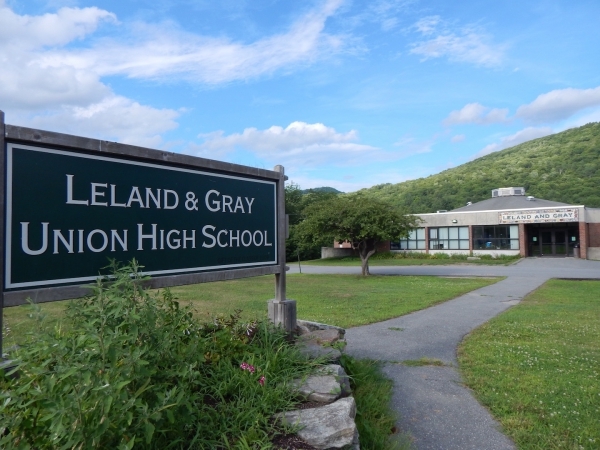TOWNSHEND — After discovering elevated radon levels at two elementary schools earlier this year, Windham Central Supervisory Union officials quickly corrected those problems.
But the potentially hazardous gas has caused more persistent issues at Leland & Gray Middle and High School, the supervisory union's largest building.
With students returning to class, officials say they finally have preliminary test results showing that radon is within acceptable limits at Leland & Gray. They're hoping those numbers will be confirmed by final tests, which will be available soon, Principal Bob Thibault said.
“I certainly appreciate the patience of the community as we have worked hard to resolve this lingering problem,” Thibault said.
Officials have been dealing with the issue for six months.
In March, Leland & Gray's school board alerted parents and staff about elevated radon readings based on tests conducted in February. Measurements in the library, music room, weight room, and a nearby classroom all exceeded 4 picocuries per liter of air, which is the U.S. Environmental Protection Agency's “action level” for radon.
Leland & Gray administrators also discovered that elevated radon levels were detected at the school as far back as 2009, though no remediation projects had been undertaken. That disclosure prompted criticism from some parents and staff members.
Further testing also revealed higher-than-expected radon readings at NewBrook Elementary in Newfane and Townshend Elementary, located near Leland & Gray in Townshend.
Such findings caused concern because long-term exposure to high levels of radon is linked to increased risk of lung cancer, especially among those who smoke. The gas is odorless, colorless, and naturally occurring, so the only way to find unsafe levels is through testing.
More information is available at www.epa.gov/radon.
Windham Central officials told residents that there were no immediate health concerns and undertook remediation projects at all three schools. Superintendent Bill Anton said the two elementary schools are now “all clear.”
“They came in, did one mitigation, no problem,” Anton said.
But there has been no simple solution at Leland & Gray, where a contractor “had to keep going back and working with it,” Anton said.
At a recent meeting, Thibault told Leland & Gray board members that additional ventilation measures in the music and water tank rooms had produced preliminary radon levels below 4 picocuries per liter.
The library also had shown acceptable levels, so “we're very hopeful,” Thibault said.
With no students in the building during the summer months, “the windows have actually been closed,” he added. “That actually helps our test results be more accurate.”
Anton said he isn't sure why the problem has been so persistent at Leland & Gray, other than the fact that the school is built into a hillside. The EPA says radon results from the breakdown of uranium in soil, rock, and water, and the gas seeps into buildings from the ground.
The school's radon-mitigation contractor, Anton said, has been “great” and “very transparent.” Nevertheless, the bills are adding up: Anton estimated that the price tag of Leland & Gray's ongoing radon project is between $10,000 and $20,000.
Based on the events of the past six months, officials say they plan to keep a closer eye on radon at all Windham Central schools.
“We'll do annual testing from this point forward,” Anton said. “If it ever changes, we'll mitigate it again.”
